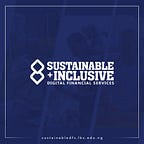Getting Financial Inclusion Right: Exploring the Benefits of Financial Literacy
The role of financial literacy in enhancing financial inclusion
Financial inclusion is a means to an end, not the end in itself.
Financial inclusion is a lever for improving the financial health of citizens, granting them access to tools, products, services as well as knowledge which will help them manage and plan their finances effectively.
Even as concerted efforts are being made to improve financial access across the country, it is important to remember that the excluded populations we’re targeting will not automatically understand how to harness the new tools and opportunities at their disposal (like mobile banking, customer loyalty programs, savings, quick loans and investment apps etc) without proper education and encouragement. And this is where financial literacy comes in.
Aurel Schubert, Director-General of the European Central Bank explains financial literacy as “an encompassing knowledge about financial concepts, financial numeracy, the ability to make informed judgments and to take effective decisions regarding the use and management of money, as well as awareness of financial products and services.”
This knowledge is necessary particularly for the excluded citizens who are being targeted with inclusion campaigns.
The need to move beyond just financial access
As was revealed in the 2017 Global Findex Report, financial access does not necessarily equal financial inclusion. In spite of increased bank and mobile money accounts, account inactivity also spiked. People were opening accounts (or accounts were being opened on their behalf), however, these accounts were being increasingly abandoned. As we explained in this article, true financial inclusion goes beyond opening or having a bank account. Measuring bank accounts may be helpful, but if it is not leading to improved welfare of the consumers, it becomes a vain metric.
Stakeholders are looking to improve financial access by addressing infrastructural gaps. But we also need to reduce the churn rate / number of abandoned bank accounts. It is possible that accounts are being abandoned because the account holders are yet to see or understand the opportunities at their disposal e.g. credit history, loans, opportunities to formalise their business etc. This is a gap that financial literacy can close.
And this is why we need to dig deeper.
Financial literacy, a missing ingredient
Observing financial inclusion campaigns in other markets, there have been recorded progress / success with interventions which coupled granting citizens financial access alongside adequate financial literacy programs. For example, in Ethiopia, a USAID program successfully transitioned rural farmers out of cycles of abject poverty by combining financial intervention initiatives with proper financial literacy and business skills training. Within a year, recipients of the cash interventions and literacy skills were able to graduate out of the safety net program.
Indeed, the maxim is true — information is power.
Delivering this knowledge to citizens will require customised and contextualised financial literacy initiatives due to the fact that excluded citizens are spread across the country and exist in every demographic categorization.
Learning needs differ as well as learning methods. Thus, literacy campaigns should not be one-size-fits-all. For example, farmers, traders, artisans, students and teachers etc all have divergent learning needs. There are also peculiarities across cultures.
Seeing that literacy levels differ across the country, what are the modes of teaching that would be ideal for each region?
Literacy campaigns can also be enhanced by mentoring programs, with the aim to guide and handhold newly banked individuals to navigate the formal financial sector. This way we leverage the power of social learning dynamics to encourage even more people to adopt and stick to the new tools and services they have been introduced to.
A big learning opportunity
Financial literacy campaigns, when done right, are mutual learning opportunities, for the provider, the consumer and even the regulator. Providers learn about the consumer’s knowledge gaps, habits and needs (this should lead to more consumer-centric products and services). Consumers learn about the services and products that can meet their needs. The regulator learns about the inhibitors facing both parties and can adjust their policies and regulatory instruments accordingly. Win-win-win.
Conclusion
The role of financial literacy in improving financial inclusion is crucial. The knowledge of tools and services, the inherent advantages and opportunities they afford are the building blocks of a healthy financial profile. Going forward, we need to build an understanding that the financial inclusion journey does not end at financial access. Rather, until our people are actively using and exploiting the tools at their disposal to improve their financial situations, and thus creating a society with true shared prosperity, our job is not done.
